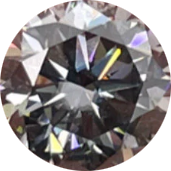Why Some Laboratory-Grown Diamonds Fail to Test as 'Diamond'

This discrepancy in testing results poses identification risks and can be confounding for consumers. Despite being chemically identical to natural diamonds, laboratory-grown diamonds may contain impurities uncommon in their naturally occurring counterparts. One such impurity is boron.
Boron, when trapped within the diamond's crystal structure, is a rare occurrence in natural diamonds, affecting their color and electrical conductivity. Laboratory-grown diamonds, particularly those produced via HPHT methods, often contain boron due to its use in the production process, leading to variations in their properties.
While boron's presence is minimal, even trace amounts can significantly impact a diamond's characteristics, including color and conductivity. This presence of boron, especially in colorless HPHT laboratory-grown diamonds, can lead to their misidentification as synthetic moissanite during basic diamond testing.
The challenge arises from the historical design of diamond testers, which primarily rely on thermal and electrical conductivity tests to distinguish diamonds from their simulants. Synthetic moissanite, with its distinct electrical properties, presents a unique challenge to these testers, complicating the identification process.
However, it's essential to note that laboratory-grown diamonds' properties may deviate from those of natural diamonds, making accurate identification crucial. While diamond testers remain valuable tools, visual inspection and additional testing methods are necessary to confirm a stone's identity, especially when dealing with laboratory-grown diamonds.
Leave a comment
Comments will be approved before showing up.
Also in Articles
 Birthstones by Zodiac: A Guide to Choosing Your Perfect Astrological Gemstone
Birthstones by Zodiac: A Guide to Choosing Your Perfect Astrological Gemstone
Birthstones by Zodiac: A Guide to Choosing Your Perfect Astrological Gemstone
Looking to connect with the stars and wear a gem that truly resonates with your spirit? Birthstones by zodiac sign offer a powerful, personalized way to reflect your astrological energy through beautiful, meaningful jewelry. Whether you're a fiery Aries or a dreamy Pisces, there's a gemstone tailored just for you. In this guide, we'll explore the best zodiac birthstones, their meanings, and how to choose the right one for you.





























